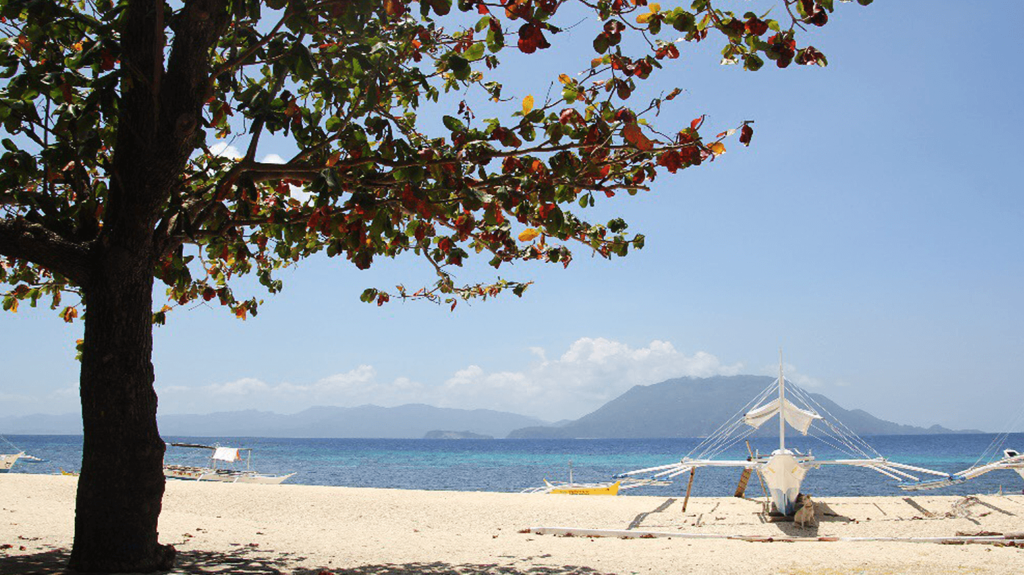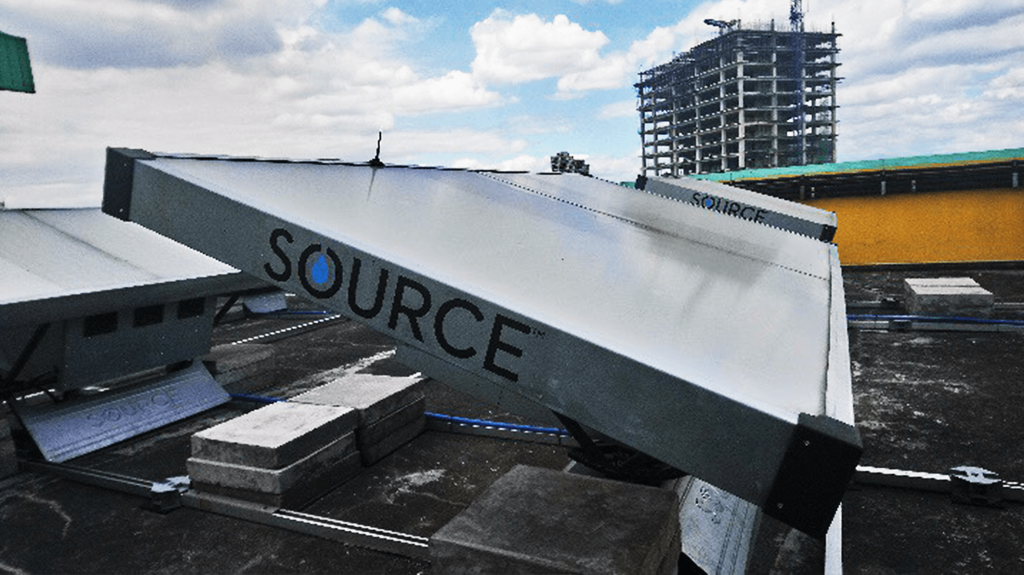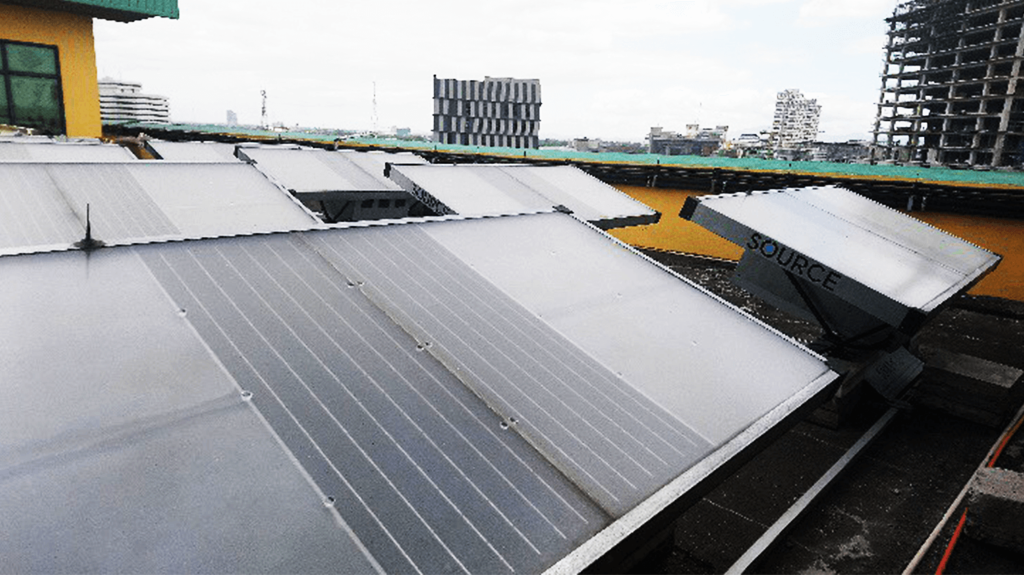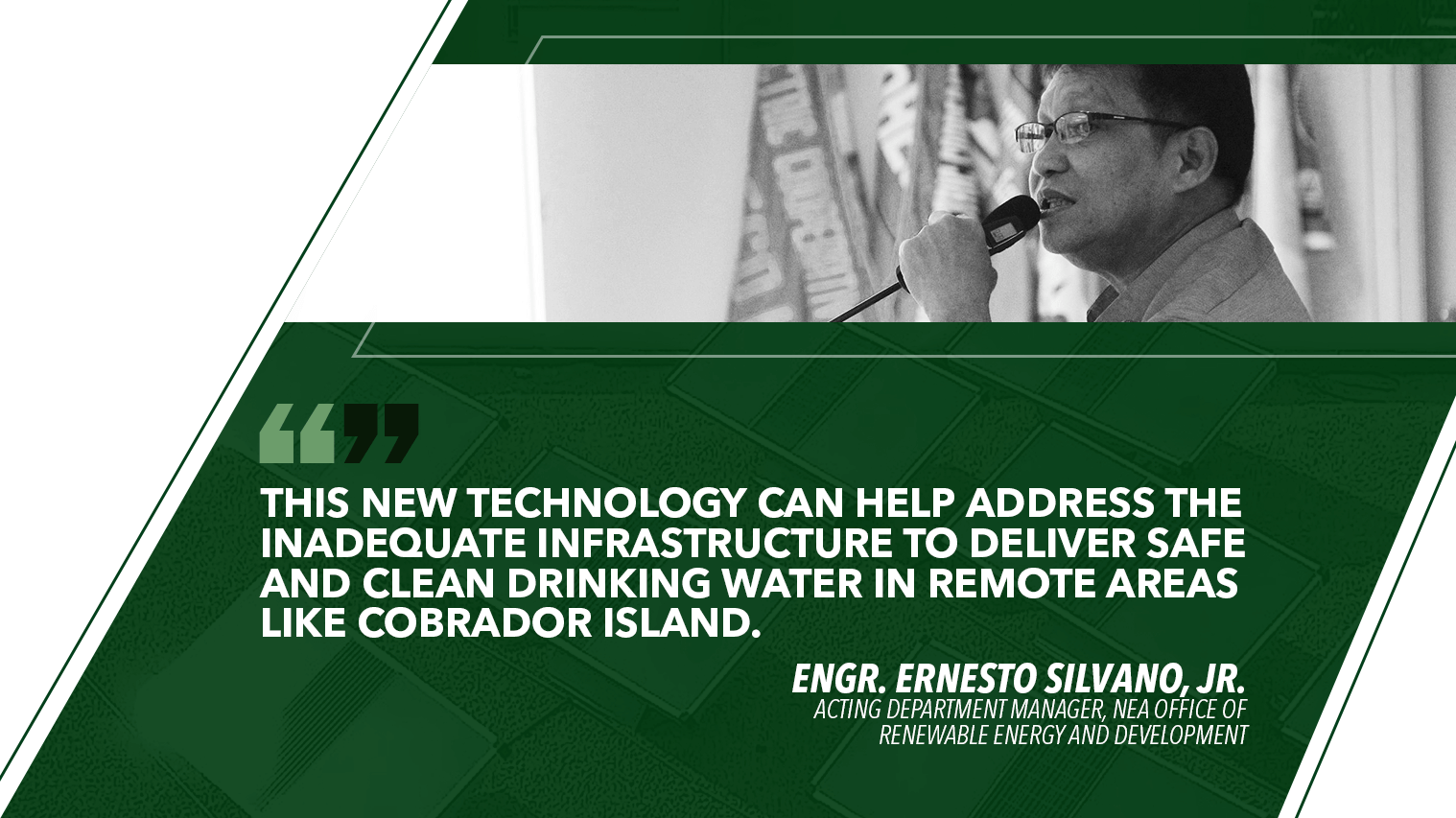The National Electrification Administration (NEA), in collaboration with the Asian Development Bank (ADB), will install solar-powered hydropanels in Cobrador Island, Romblon whose community has been deprived of access to safe drinking water for years.

The agency will be deploying four SOURCE Hydropanel units this April, which is part of its ongoing project with the ADB to help families experiencing potable water supply problems in off-grid rural areas, especially in small islands.
“This new technology can help address the inadequate infrastructure to deliver safe and clean drinking water in remote areas like Cobrador Island,” Engr. Ernesto Silvano, Jr., acting department manager of the NEA Office of Renewable Energy and Development, said.

The SOURCE Hydropanel, developed by U.S.-based Zero Mass Water, Inc. (ZMW), extracts water vapor from the air into a proprietary absorbent material. The collected water from the hydropanels flows into a reservoir where it is mineralized with calcium and magnesium “for health and taste benefits.”
“The island’s water woes is still solvable. It can be solved, especially that there are technologies readily available.”
On average, each hydropanel unit can produce five liters of water per day. This means four SOURCE Hydropanel units can produce about 20 liters of water a day.
Cobrador is under the franchise area of the Romblon Electric Cooperative, Inc. (ROMELCO). Also known as “Naguso Island,” it currently does not have a desalination plant that can turn saltwater into drinking water for the daily consumption of its community.
Barangay captain Juan Dela Cruz said they use well water or rainwater collected from their rooftop gutters for bathing and their laundry but clean drinking water has to be transported from the mainland, which is a 45-minute boat ride.
“Islanders pay P45 for a four gallon container of water used for drinking and cooking. The amount is twice the price in the Romblon mainland.”
“Noon, ang source namin ng inuming-tubig ‘yung ulan. Buti na lang ngayon nauso na ‘yung mineral water pero noon talaga kahit maalat-alat ‘yung tubig, iniinom na, kasi no choice,” the 65-year-old village chief said.
Islanders pay P45 for a four gallon container of water used for drinking and cooking. The amount is twice the price in the Romblon mainland.
Those who cannot afford a container of potable water are left with no choice but to use rainwater for drinking and cooking. Water from deep wells is unfit for consumption due to high salinity.
Engr. Rene Fajilagutan, general manager of ROMELCO, believes that the island’s water woes is still solvable. “It can be solved, especially that there are technologies readily available,” he said, adding that solar energy can also help solve the problem.
At present, Cobrador has 30-kilowatt solar hybrid power generation system that supplies cleaner and affordable round-the-clock electricity to the community of 257 households. ROMELCO is already planning to augment its capacity.

SOURCE Hydropanels were also deployed in areas covered by the Agusan del Sur Electric Cooperative, Inc., Bohol Electric Cooperative, Inc., Davao del Norte Electric Cooperative, Inc., Davao del Sur Electric Cooperative, Inc., First Bukidnon Electric Cooperative, Inc., Pangasinan I Electric Cooperative, Inc., and Samar I Electric Cooperative, Inc.


